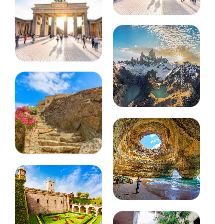Versailles: Secrets and wonders of the royal castle
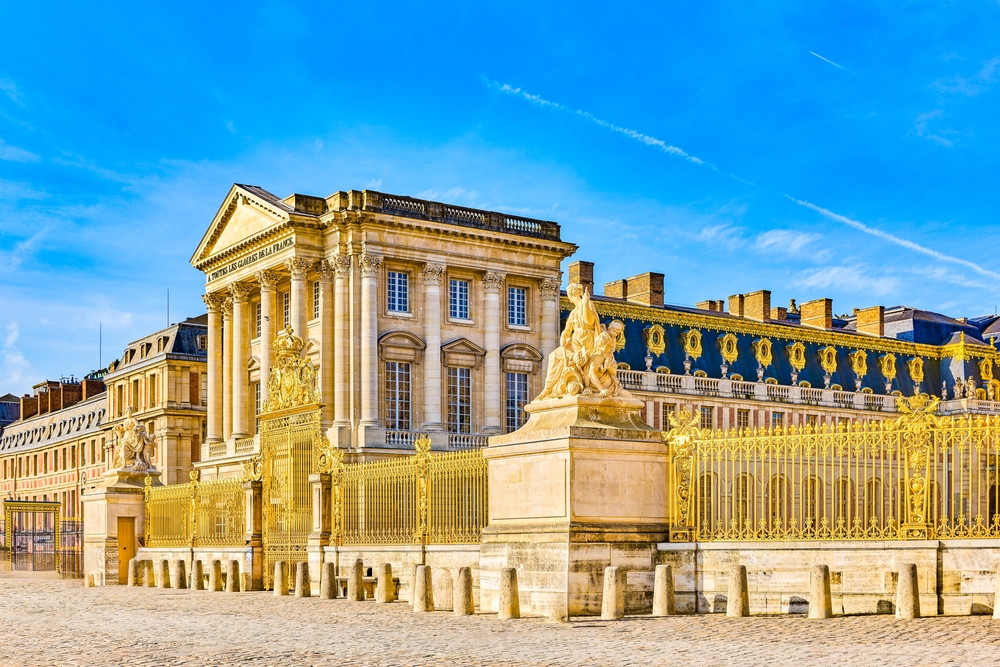
The Château de Versailles epitomises the grandeur and splendour of the French monarchy. This architectural jewel, designed by Louis XIV to glorify his reign, remains one of the most visited monuments in France and an exceptional example of 17th-century French art. Listed as a UNESCO World Heritage Site since 1979, the château fascinates visitors with its rich history, sumptuous gardens and strikingly beautiful royal flats. Located just 20 kilometres from Paris, this symbol of French art de vivre promises a total immersion in French history.
200 audioguided tours for cities all around the world
Download1. The fascinating history of the Château de Versailles
The history of the Château de Versailles began in 1623 with a modest hunting lodge built by Louis XIII. It was not until Louis XIV came to power that the estate underwent its legendary transformation. In 1661, the Sun King launched ambitious works that would last several decades, calling on the greatest architects of the time: Louis Le Vau, Jules Hardouin-Mansart and André Le Nôtre for the gardens.
In 1682, Louis XIV decided to move his court permanently to Versailles, transforming the château into a veritable centre of French political power. This decision marked the golden age of Versailles, which became the theatre of French political and cultural life for over a century. The château bears witness to the evolution of French architecture, and today houses more than 2,300 rooms spread over 63,154 m².
Also read the Versailles guide :
- Visit Paris in 3 days: a guide to the French capital
- Cruises on the Seine in Paris: itineraries, fares and advice
- Top 8 activities in Paris
- Top 7 best hotels in Paris
- 5 weekend ideas around Paris
2. The Hall of Mirrors, an architectural gem not to be missed
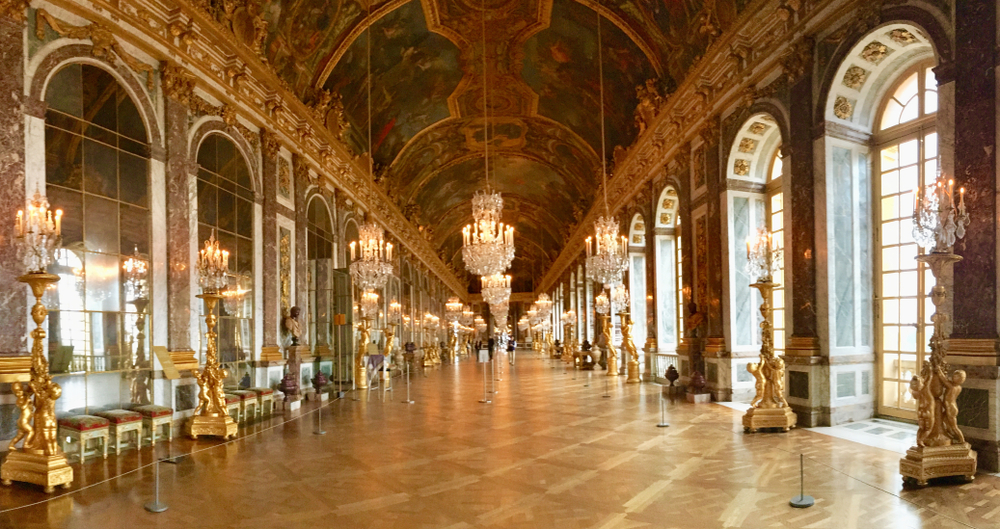
The Hall of Mirrors is without doubt the absolute masterpiece of the Château de Versailles. This exceptional ballroom is 75 metres long and dazzles visitors with its 357 mirrors facing 17 large picture windows overlooking the gardens. Inaugurated in 1684, this gallery bears witness to the exceptional skills of French craftsmen of the time.
To create this marvel, Louis XIV called on Venetian glass craftsmen, despite the considerable risks involved – the Venetian government having ordered the murder of these craftsmen to preserve Venice’s monopoly on mirror manufacture. The Hall of Mirrors has witnessed many major historical events, including the signing of the Treaty of Versailles in 1919, which ended the First World War.
3. The King’s Apartments, a reflection of royal splendour
The Grands Appartements du Roi epitomise the refinement and opulence of the court of Louis XIV. These sumptuous rooms, once the residence of the Sun King, comprise seven salons richly decorated according to a planetary theme. Each salon bears the name of a planet and features sumptuous decorations by Charles Le Brun, the King’s first painter.
Visitors can admire the exceptional painted ceilings, period furniture and precious tapestries that bear witness to the extraordinary art of living of the French monarchy. The highlight of the visit is the Salon d’Apollon, the throne room, with its solid silver throne and dazzling decorations dedicated to the solar god, the symbol chosen by Louis XIV.
4. The gardens of Versailles, a major work by André Le Nôtre
The gardens of Versailles cover 800 hectares and are one of the finest examples of formal gardens in the world. Designed by André Le Nôtre from 1661 onwards, these gardens perfectly reflect the art of living and the aesthetic vision of the Grand Siècle. The ensemble includes geometric parterres, secret bosquets, spectacular fountains and the famous 1.67-kilometre-long Grand Canal.
The gardens are home to 372 statues, 55 water features and 600 fountains fed by a hydraulic system that was revolutionary for its time. The Grandes Eaux Musicales and the Jardins Musicaux, held on certain days, allow you to admire these fountains in action against a backdrop of Baroque music. A stroll through the gardens will reveal grandiose perspectives and unique views of the château.
Download the audio tour to discover Versailles on foot and on your own
Although Navaway does not yet offer a specific tour for the Château de Versailles, the architectural and historical wealth of this exceptional monument deserves an in-depth visit. While we wait for a dedicated itinerary, you can discover our other tours to explore the most beautiful French and European cities with our fun and interactive audio guides.
5. The Trianon estate, Marie-Antoinette’s refuge
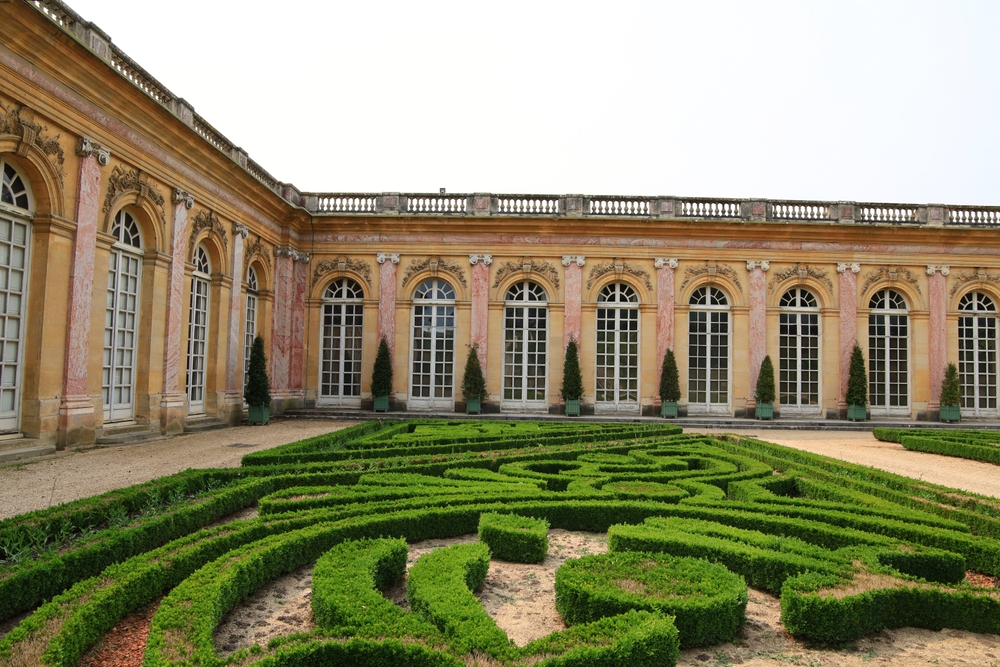
The Trianon estate offers a striking contrast to the opulence of the main château. The Grand Trianon, built by Jules Hardouin-Mansart in 1687, served as Louis XIV’s private residence to escape the constraints of Versailles etiquette. This palace of pink marble and green porphyry is distinguished by its refined architecture and intimate flats.
The Petit Trianon, a gift from Louis XVI to Marie-Antoinette, testifies to the Queen’s taste for simplicity and intimacy. This architectural jewel, designed by Ange-Jacques Gabriel, is accompanied by the famous Hameau de la Reine, a reconstructed Norman village where Marie-Antoinette liked to play shepherdess, far from the glitz and glamour of the court. These sites provide an insight into the complex personality of France’s last queen.
6. The Royal Chapel, a masterpiece of sacred art
The Royal Chapel at the Château de Versailles, completed in 1710, represents a pinnacle of French Baroque architecture. Designed by Jules Hardouin-Mansart and Robert de Cotte, the chapel impresses with its exceptional height and remarkable acoustics. The building bears witness to the deep faith of Louis XIV and the importance attached to religious ceremonies at court.
Visitors can admire the ceiling paintings by Antoine Coypel, the gilded woodwork and the historic organ, which is still used today for exceptional concerts. The chapel has played host to many important events, including the marriage of the future Louis XVI to Marie-Antoinette in 1770.
7. The Royal Opera, stage for sumptuous performances
TheRoyal Opera House at Versailles, inaugurated in 1770 for the wedding of Louis XVI and Marie-Antoinette, is a veritable jewel of French theatrical architecture. Designed by Ange-Jacques Gabriel, the opera house stands out for its gilding, blue velvet and revolutionary machinery that allows the auditorium to be transformed to suit the needs of the shows.
Still in operation today, the Opéra Royal hosts a varied programme ranging from baroque operas to contemporary creations. Its 712-seat capacity and exceptional acoustics make it one of the finest theatres in the world. Performances in this historic setting offer a unique cultural experience, allowing you to relive the atmosphere of 18th-century Versailles evenings.
8. Practical information for visiting the Château de Versailles
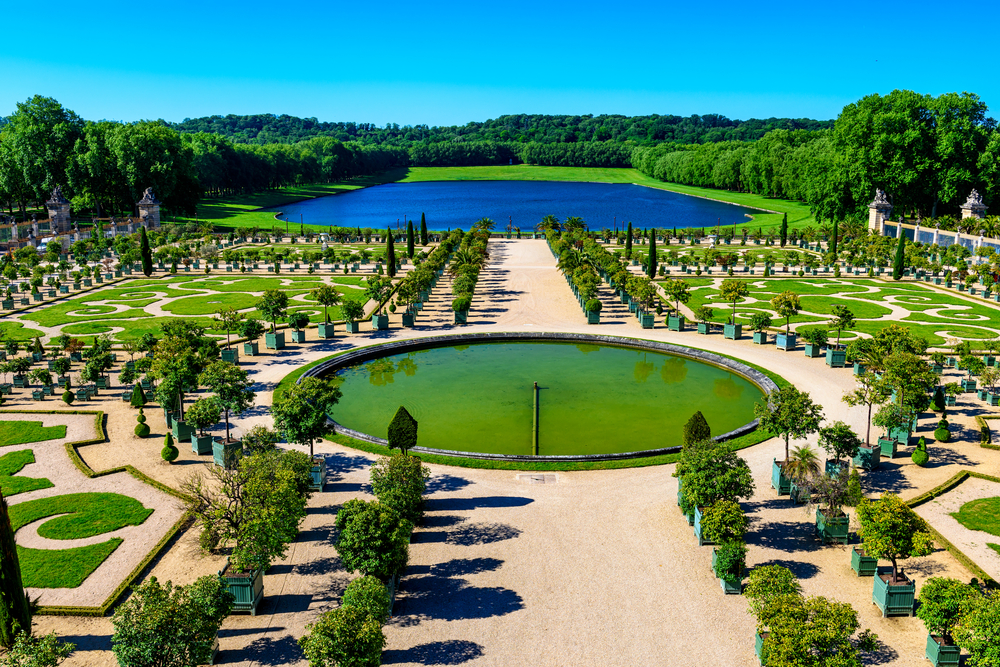
The Château de Versailles is located at Place d’Armes, 78000 Versailles (rated 4.4/5 on Google for over 89,000 reviews). The château is easily accessible from Paris by RER C train to Versailles Château Rive Gauche station, a ten-minute walk from the monument.
The château is open Tuesday to Sunday from 9am to 5.30pm (6.30pm from April to October). The gardens are open every day except Monday from 8am to 8.30pm in summer and until 6pm in winter. It is strongly recommended to book tickets in advance to avoid queues, particularly in high season. Prices vary according to the package chosen: château only (€18), château and gardens with shows (€27), or passport giving access to the entire estate (€30).
9. Cultural events and festivities in Versailles
The Château de Versailles offers an exceptional cultural programme throughout the year. The Grandes Eaux Musicales (April to October) and the Grandes Eaux Nocturnes (summer) transform the gardens into a grandiose theatre where fountains and baroque music create an enchanting atmosphere.
The château also hosts internationally renowned temporary exhibitions, concerts in the Royal Opera House and Chapel, and shows in the gardens. The Royal Serenade, organised on certain summer evenings, allows visitors to discover the royal flats by candlelight in an authentic period atmosphere. These events offer a unique approach to discovering Versailles in a new light.
10. Tips for making the most of your visit to the château
To make the most of your visit to the Château de Versailles, plan your day according to your areas of interest. Ideally, start with the Grands Appartements and the Hall of Mirrors in the morning, when there are fewer visitors. Devote the afternoon to the gardens and the Trianon estate, which are more peaceful and ideal for a stroll.
Avoid Tuesdays and weekends, which are particularly busy, and opt for Wednesday to Friday. The official audio guide, available in several languages, will greatly enhance your understanding of the site. Don’t hesitate to plan a full day to explore the entire estate, including lunch in one of the château’s restaurants for a gourmet break at the heart of French history.
In conclusion, the Château de Versailles remains an essential part of France’s heritage, offering an exceptional insight into the history of the French monarchy. From the Hall of Mirrors to André Le Nôtre’s gardens, the royal flats and the Trianon estate, every corner of this exceptional monument tells a page in our history. A visit to Versailles is an unforgettable experience that will leave an indelible mark on your discovery of France’s heritage. For the best possible exploration, don’t hesitate to discover our audio-guided tours, which will enable you to visit the most beautiful French and European destinations on your own.
Frequently asked questions about the Château de Versailles
How long does it take to visit the Château de Versailles?
A complete visit to the Château de Versailles takes a full day. Allow 2-3 hours for the main château, 2-3 hours for the gardens and 2 hours for the Trianon estate. For an in-depth visit including shows and events, allow two days.
When is the best time to visit Versailles?
The best periods are spring (April-May) and autumn (September-October) to avoid the summer crowds. During the week, we recommend Wednesday to Friday. Opening at 9am is ideal for exploring the flats in a quiet setting.
Can I visit Versailles for free?
On the first Sunday from November to March, the entire estate is free for all. Access to the gardens is free except on high water days. Admission is free all year round for under-18s and EU citizens under 26.
How do I get to Versailles from Paris?
The easiest way is to take the RER C to Versailles Château Rive Gauche (10 minutes’ walk). From Montparnasse, take line N to Versailles Chantiers (18 min walk). From Saint-Lazare, take line L to Versailles Rive Droite (17 min walk).
What’s not to miss at Versailles?
Highlights include the Hall of Mirrors, the King’s Apartments, the King’s bedroom, the formal gardens, the Grand Trianon, the Petit Trianon and the Queen’s Hamlet. If you only have half a day, concentrate on the main castle and the Hall of Mirrors.
200 audioguided tours for cities all around the world
Download